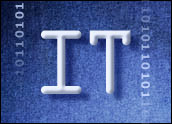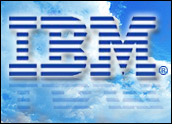
Gut-wrenching recessions have a way of changing things … for people, families and companies. They can also, perhaps like no other event, provoke change in large IT vendors like HP, IBM, TIBCO and Oracle.
Based on recent HP announcements and IBM’s Impact conference, these two of the very largest, full-service, global IT vendors are betting — now that the recession has, at the least, bottomed out — that the extent of change now upon us is more than just another business cycle come full circle.
Far more, these vendors see that the recession has provided a catalyst for a much larger shift in how IT is done and delivered. It’s no coincidence that the interest in cloud computing and innovative IT sourcing options, for example, peaked when the recession was at its deepest.
The idea garnering wide attention in the darkest days was not just to save money by downsizing, but to also to start doing things very differently — to truly innovate, to change the very economics of IT. But now that the worst is over, simply saving money via old IT methods, I’ll wager, will prove a lot more expensive in real terms than rapidly investing in new ways of providing IT value as services.
That doesn’t mean that some enterprise IT organizations won’t try to go right back to business as usual. And some of the IT vendors, with their license auditors in tow, are counting on it.
It does mean that the enterprises that can actually change how they do and pay for IT in the post-recession economy may have an escalating advantage over those that do not.
Not the Same Old Song and Dance
HP has announced the equivalent of a Swiss Army knife for IT transformation, with about as many blades and instruments as there are ways to attack the data center transformation Gordian Knot. The HP services, software, and sourcing offerings are designed to guide enterprises — from the starting points of their choosing — through a seismic transition from cost containment to IT innovation.
Recently, IBM boldly scooped up Cast Iron Systems, a cloud-to-IT integration engine maker, and further polished its view that the way to a smarter planet is via better business processes and a deep understanding of vertical industries, automation and how IT (with professional services) can bring them together. My colleague Tony Baer at Ovum delves into IBM’s recasting of the definition of business applications and acceptance of the partly cloudy future.
TIBCO at its annual user conference delivered a dozen major announcements and stepped even more boldly into cloud models, too. TIBCO’s “Enterprise 3.0” vision emphasizes the importance of real-time and massive scale processing, an integrated development-to-deployment to business process management capability, and now the option of building out an enterprise private cloud to public cloud synergy using partners like Amazon Web Services. TIBCO is also embedding BI capabilities deeply across the portfolio.
Oracle, for its part, made good on its “software, hardware, complete” vision via a cameo (and somewhat buffoon-like) appearance by Chairman and CEO Larry Ellison in the debut of the movie “Iron Man 2” last week. Perhaps we should expect a fist-sized “arc reactor” for database appliances in the near future? Yet Oracle is also recently drinking deeply from the cloud well, given some its recent speeches by executives as it digests the Sun Microsystems acquisition.
The point is that these vendors know something big is up in IT, beyond business as usual. We’re seeing bold moves by them all, from acquisitions to restructuring to Hollywood-delivered group-think and not-so-subliminal brand imagery.
HP Tackles the IT Funding Conundrum
HP is looking to actually help enterprises fund these transformative times. HP’s economic rationale for moving to innovation now goes beyond the need for swift and verifiable ROI in IT investments. Additionally, HP is banking on the high and painful costs of not being able to move well in dynamic markets, of incurring costs from inertia, rather than from investing for advancement.
Most urgently, IT cannot miss out in supporting businesses as they face rapid growth and savvy competitors across global markets, says HP.
More succinctly, HP’s message from this week’s announcements comes as a warning that going back to the old IT ways, of sliding back to the economics of expensive waste as a proxy for brittle peak reliability, risks missing the lessons of the recession.
HP is therefore taking a three-pronged approach to making adoption of innovations the new mantra of IT. The first approach finds way to deliver self-funding projects. The second leverages modern architecture and methodologies so IT organizations can quickly and easily add new functionality, making change the constant. The third approach shows how to freeing up funds trapped in on-going IT operations based on older IT economics.
As enterprises are faced with transformation from old to more modern IT, many are caught in an inertia of avoidance — frozen by the complexity and scale of the task, according to new research supported by HP. What’s needed is incremental change that pays for itself along the way, but which remains aligned with the strategic transformation and direction.
The HP focus on self-funding projects, therefore, includes offering qualified clients a complimentary, hands-on HP Applications Modernization Transformation Experience session that illustrates IT modernization and its benefits. The goal: By retiring legacy applications and eliminating complexity in technology environments, organizations are able to self-fund their modernization journeys.
Cost of Lost Opportunity
“The phrase ‘time is money’ rings true here, as 99 percent of organizations say that innovation gridlock cost them in lost time,” said Thomas E. Hogan, executive vice president of sales, marketing and strategy for HP Enterprise Business, in a release. “By breaking the innovation gridlock, organizations can regain time to market and capitalize on new opportunities.” More here.
According to research conducted on behalf of HP by Coleman Parkes Research:
- Some 95 percent of business and technology executives said innovation gridlock resulted in lost opportunities for their organizations.
- And 91 percent felt that innovation gridlock cost their organizations in lost effort (from resources). More data is available here.
Together the promise of cloud, the constraints of the recession, and the quick-paced requirements of modern business agility have conspired to expose the weaknesses of plain old IT … stack upon stack, brittle apps astride brittle apps, and rack by rack of under-utilized workloads alienated from their fit-for-purpose potential.
HP says the cost of doing nothing to transform IT is too great to ignore. IBM is transforming the very definition of business services and applications with plant-wide efficiencies in mind. TIBCO is refining software delivery that steps up to the cloud challenge. Oracle is enclosing its software in an optimized “iron” support infrastructure to improve performance to cost ratios dramatically.
All these vendors will still sell you the good old IT systems the good old ways. But they are also coming up with some big new tricks. Who will take them up on their hedge against a truly transformative IT future?
Dana Gardner is president and principal analyst at Interarbor Solutions, which tracks trends, delivers forecasts and interprets the competitive landscape of enterprise applications and software infrastructure markets for clients. He also produces BriefingsDirect sponsored podcasts. Follow Dana Gardner on Twitter. Disclosure: HP and TIBCO have sponsored BriefingsDirect podcasts.



















































Social Media
See all Social Media